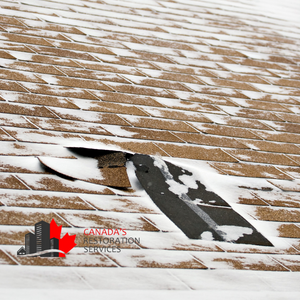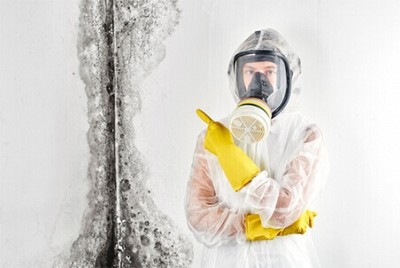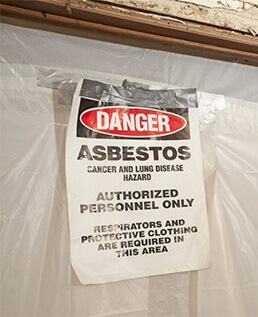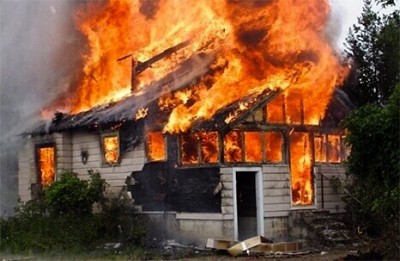Has Winter Weather Revealed the Need for Asbestos Removal in Toronto?
Posted in Asbestos Removal, on February 15, 2022
Asbestos-containing materials installed and sealed over 40 years ago were initially able to withstand any impending conditions without becoming a threat. But with time, those materials that remain within residential or commercial buildings have deteriorated or are slowly declining, leaving occupants vulnerable to exposure. In most cases, asbestos exposure can be linked to renovation, ultimately leading to asbestos removal in Toronto. However, there are situations where asbestos used in roofing materials or other outdoor applications have been disturbed by a natural weather event. The winter brings a particular set of challenges when it comes to weather conditions, that’s best to avoid altogether with preventative asbestos removal in Toronto.
If you’re the owner of a home that was constructed before 1980, it’s highly recommended that you contact an asbestos expert at Canada’s Restoration Services to have asbestos testing in Toronto done at your property. Outdoor asbestos-containing materials on your property are just as harmful as indoor ones. Identifying the problem before it escalates is the best way to keep you and your household safe.
Roofing Materials That Require Asbestos Testing in Toronto
 Asbestos-containing roofing materials aren't the most visually identifiable products. However, knowing the age of your home is a good indicator: if your property was built between 1950 and 1980, there’s a good chance your roofing contains asbestos in one form or another. But it’s best to have a professional confirm the presence of asbestos through asbestos testing in Toronto.
Asbestos-containing roofing materials aren't the most visually identifiable products. However, knowing the age of your home is a good indicator: if your property was built between 1950 and 1980, there’s a good chance your roofing contains asbestos in one form or another. But it’s best to have a professional confirm the presence of asbestos through asbestos testing in Toronto.
The most common asbestos-containing roofing materials are cement and corrugated cement, asphalt shingles and tar paper, mineral fibre and slate. Cement roof tiles that contain asbestos usually come in square form, with a colour combination of black and grey. While these tiles can last decades, they pose a severe health hazard when damaged or disturbed. However, corrugated cement tiles containing asbestos were designed to last only a short period, as they can quickly disintegrate.
Asbestos incorporated into asphalt shingles typically contains a small amount of the mineral. These shingles come in various colours that include green, red and blue. Asphalt tar paper containing asbestos was one of the most common types of roofing material with the mineral, typically utilized as an underlayment.
Made from a mix of asbestos fibres and cement, mineral fibre can typically be found in a green shade and a striated texture. Like most asbestos-containing roofing materials, mineral fibre is highly friable and presents a severe hazard when damaged or disturbed.
Asbestos fibres contained in slate are only exposed when damaged or broken and come in shades that include purple, peachy orange, grey and light green. While less threatening when intact, it is still recommended that you proceed with asbestos removal in Toronto regarding slate.The majority of asbestos-containing roofing materials mentioned above are in a friable state. Extreme winter weather conditions and storms can drastically affect both the materials and your household.
The added weight of snow, ice or sleet on your roof can lead to the mineral seeping into your home, as the structural integrity of older roofs is already compromised. Extreme temperature changes and melting snow can also cause water to leak into your home, bringing particles of friable asbestos roofing materials with it.
Preventing Exposure with Asbestos Removal
Instead of waiting for a winter event to damage your roof and increase the chances of asbestos particles making their way into your home, contact Canada’s Restoration Services now to have testing and asbestos removal in Toronto done on your home. Once we confirm the presence of asbestos through testing samples, we move towards a full-scale removal of the material in question. This involves setting up complete containment equipment and gear to prevent any cross-contamination or spread from occurring.







